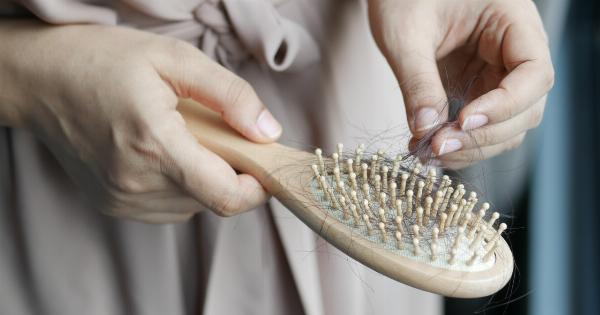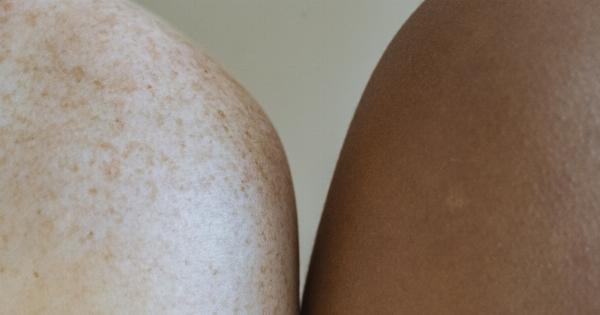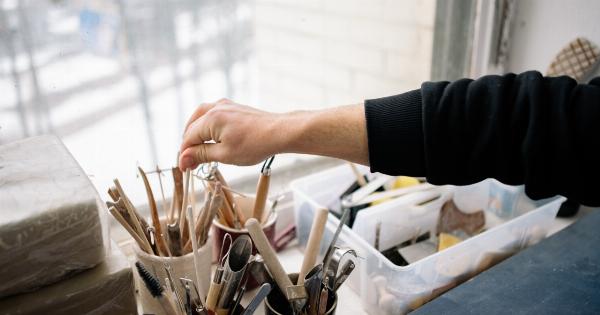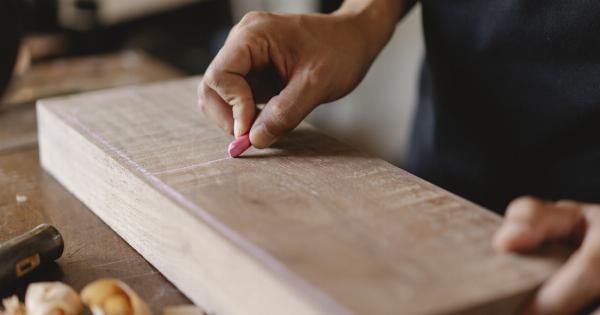Tweezing, the process of removing unwanted hair using a tweezers, is a popular method of hair removal for many people. It provides precision and control, allowing individuals to target specific areas with ease.
However, tweezing at dusk poses hidden risks that may not be immediately apparent. In this article, we will explore these risks and provide tips for safe tweezing practices.
The Importance of Proper Lighting
One of the main risks of tweezing at dusk is the lack of adequate lighting. As the sun sets and natural light diminishes, attempting to tweeze hair becomes increasingly challenging.
Poor lighting can lead to straining your eyes, making it difficult to see the fine hairs and potentially causing unnecessary plucking. In worst-case scenarios, tweezing in poor light can result in accidental skin cuts and injuries.
To minimize the risks associated with tweezing at dusk, it is crucial to ensure proper lighting. Investing in a good quality lighted magnifying mirror can greatly enhance visibility, providing well-lit conditions for tweezing.
Additionally, positioning yourself near a window or using a bright desk lamp can further improve lighting conditions.
Maintaining Clean Tools and Sterilization
Another hidden risk of tweezing at dusk is the potential for infection. It is important to keep in mind that tweezing involves removing hair from the follicle.
This process creates open pores that can easily become susceptible to bacteria and infection if the tools are not properly cleaned and sterilized.
To minimize the risk of infection, it is essential to clean tweezers before and after each use.
Washing them with warm water and antibacterial soap and wiping them with rubbing alcohol can effectively eliminate any bacteria or dirt present on the tool’s surface. It is also advisable to regularly replace old tweezers to ensure optimal cleanliness and functionality.
Adequate Preparations Before Tweezing
Preparing your skin before tweezing is crucial to avoid unnecessary pain or damage. Neglecting to take necessary precautions can expose your skin to adverse reactions such as redness, irritation, or ingrown hairs.
Prior to tweezing, it is recommended to cleanse the area thoroughly with a mild cleanser and warm water. This helps remove any excess oils or impurities that may interfere with smooth tweezing.
Applying a warm compress to the area for a few minutes can also help to open up the pores, making the process less painful.
The Dangers of Tweezing in Dusk’s Dim Light
Tweezing at dusk can create additional risks beyond difficulty in seeing. If you rely on natural light during this time, you may face issues such as increased eye strain, squinting, and poor visibility.
These factors can lead to tweezing inaccuracies, resulting in unnecessary pain, skin damage, and even broken hair strands.
It is essential to remember that tweezing is a precise process that requires full visibility to achieve desirable results. Dusk’s dim light can compromise accuracy and lead to unsatisfactory outcomes.
To counteract this risk, ensure that you have a well-lit environment when tweezing, preferably using artificial light sources such as lamps or overhead fixtures.
Minimizing Pain and Discomfort
Tweezing, by nature, involves pulling hair out from the root, which can be uncomfortable or painful. Tweezing at dusk may amplify this discomfort due to reduced visibility, leading to increased chances of accidental tugs or improper gripping of hair.
To minimize pain and discomfort, it is advisable to stretch the skin slightly before tweezing. This helps to make the hair removal process less painful and reduces the likelihood of breaking hairs or damaging the skin.
Additionally, using tweezers with an angled tip or ones specifically designed for sensitive areas can provide better grip and precision, resulting in a more comfortable experience.
Avoiding Over-Plucking
Over-plucking is a common problem faced by many individuals who tweeze their hair. When the lighting is poor, it becomes challenging to distinguish between unruly hairs and those that are a natural part of the face or body.
This can lead to over-plucking, resulting in hair thinning, ingrown hairs, and even imbalances in facial symmetry.
To avoid over-plucking, it is important to tweeze in a well-lit area with a clear view of the hair you are removing. This will enable you to make educated decisions and prevent unintentional excessive hair removal.
Tweezing Aftercare
After tweezing, proper aftercare is crucial to ensure your skin remains healthy and free from any complications.
This is especially important when tweezing at dusk, as the body’s natural healing process can be hindered when inadequate care is provided.
Immediately after tweezing, it is recommended to apply a soothing gel or cream to the tweezed area. This helps to calm the skin, reduce redness, and prevent any potential infections.
Additionally, avoid touching the tweezed area with unwashed hands to minimize the risk of introducing bacteria.
Scheduling Tweezing Sessions
Tweezing at dusk should be avoided as much as possible due to its inherent risks and challenges. Instead, scheduling tweezing sessions during the daytime, ideally in natural daylight, is a safer and more efficient approach.
Natural daylight provides the best lighting conditions, ensuring better visibility, accuracy, and reduced strain on the eyes.
By reserving tweezing for daytime hours, you minimize the chances of mistakes or mishaps caused by poor lighting, leading to better results and healthier skin.
Conclusion
Tweezing is a popular hair removal method that offers precise control. However, tweezing at dusk poses hidden risks that can lead to accidental injuries, skin damage, and infections.
By ensuring proper lighting, maintaining clean tools, preparing your skin, and following safe tweezing practices, you can minimize these risks and enjoy a more successful tweezing experience.



























